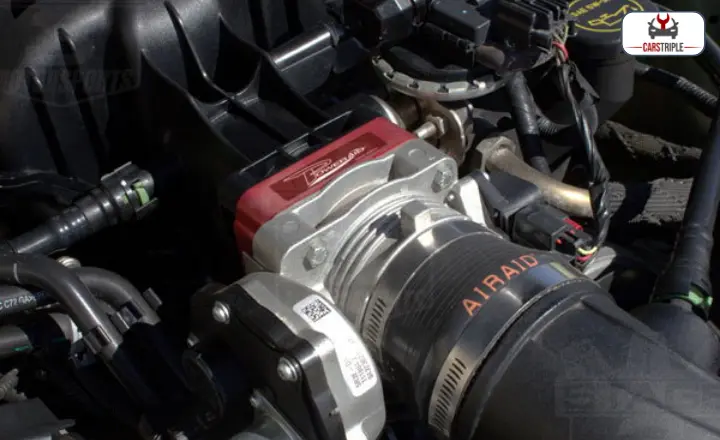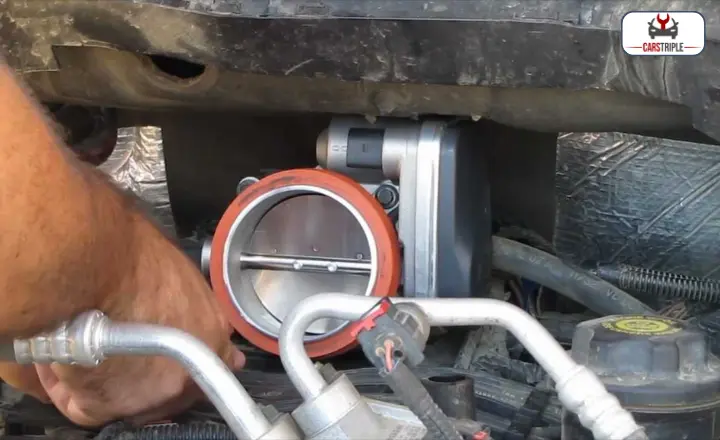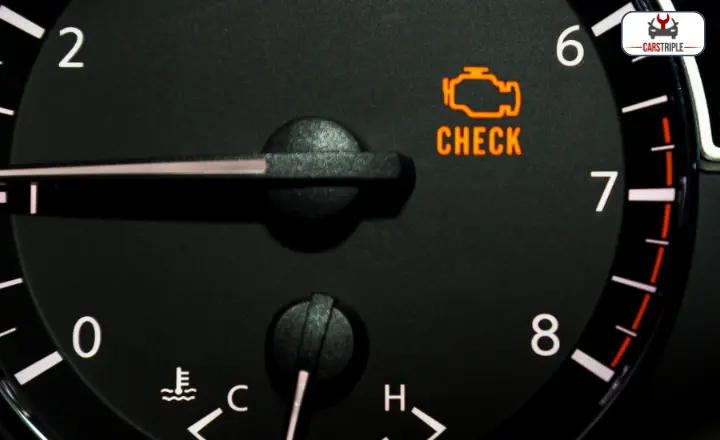The automotive industry has significantly shifted towards more advanced and efficient technologies. Electronic Throttle Control (ETC) is one such advancement that has revolutionized how vehicles operate.
Gone are the days when traditional mechanical throttle systems controlled airflow into an engine. Sophisticated electronic sensors and actuators have taken over this crucial role.
This article explores the concept of the Electronic Throttle, its working mechanism, and its signs on overall vehicle performance.
What is an Electronic Throttle Control (ETC)?
It’s also known as drive-by-wire, a technology that has revolutionized how throttle input is transferred to the engine. Unlike traditional mechanical systems where a cable connects the accelerator pedal to the throttle body, ETC uses electronic signals.
It replaces the physical connection with an electrical circuit. This system has three main components: the accelerator pedal position sensor, the electronic control module, and the throttle actuator.
With ETC, sensors detect how far and quickly you have pressed it when you press down on the accelerator pedal. These signals are then sent to the electronic control module, which processes them and determines how much air or fuel needs to be supplied to meet your desired acceleration.

It constantly monitors the movement of the accelerator pedal and sends signals to an electronic control unit (ECU) that regulates engine power accordingly.
The ECU then commands an electric motor or servo motor to adjust the position of the throttle valve based on these signals. This precise control allows quicker response times, smoother acceleration, and improved fuel efficiency compared to traditional systems.
How Electronic Throttle Control Works
ETC is a modern automotive technology that has replaced the traditional mechanical throttle in most vehicles. It uses electronic sensors and actuators to regulate the amount of air entering the engine, thereby controlling the speed and power of the vehicle.
The ETC system occurs when a driver depresses the accelerator by 25%. An integral component of modern vehicles initiates communication with the Engine Throttle Body (ETB).
This also prompts the ETB to open up by 25%, allowing more air to enter the engine and increasing fuel flow. By doing so, the ETC ensures that the vehicle responds promptly to the driver’s command for acceleration.
It is equally important to understand that when a driver releases their foot from the accelerator pedal, the ETC retakes immediate action. The ETC closes off and restricts airflow through the ETB as soon as this happens.

Idle Air Control: At the heart of this system lies the idle air control valve (IAC), a critical component that ensures the engine idles smoothly even when additional loads are placed on it. The IAC regulates the air entering the engine when the throttle is closed, maintaining a stable idle speed regardless of external factors.
When a driver takes their foot off the accelerator pedal, an electronic signal is sent to the ETC module, instructing the IAC to open or close accordingly. This adjustment allows precise control over how much air enters through bypass channels to maintain an optimal idle speed.
Cruise Control: Cruise control works by electronically controlling the throttle position based on inputs from various sources. The primary information comes from the driver, who sets their desired speed using dedicated buttons or switches.
Once activated, this information is sent to an electronic control unit (ECU), which processes it and sends commands to adjust the throttle accordingly. In addition to driver input, cruise control considers data from other sources, such as vehicle speed sensors (VSS).
Electronic Stability Control: ESC is a safety feature designed to prevent skidding or loss of control during sudden maneuvers or slippery road conditions. It uses sensors to monitor vehicle parameters such as steering angle, body roll rate, and wheel speed.
If any deviation from the intended path is detected, ESC automatically applies individual brakes on each wheel and adjusts engine power to bring the vehicle back on track. Both ETC and ESC work together seamlessly to enhance driving dynamics and safety.
Pre-Collision Systems: Modern vehicles now use electronic sensors and actuators to control airflow into the engine. This allows for more precise control and enables advanced safety features like pre-collision systems. In a traditional throttle system, when you press on the gas pedal, a cable pulls open a butterfly valve in the throttle body, allowing more air into the engine.
Transmission RPM Management: One crucial aspect of ETC is its ability to manage transmission RPMs effectively. Transmission RPM management refers to how ETC adjusts the engine’s revolutions per minute (RPM) to optimize performance during gear shifting and maintain smooth acceleration.
When a driver presses the accelerator pedal, sensors detect input signals and send them to the vehicle’s electronic control unit (ECU). Based on this information, the ECU calculates an appropriate throttle opening, considering engine load, vehicle speed, and desired acceleration.
Signs That Suggest Your Electronic Throttle Controller Has Failed
If it has gone wrong, there are a few signs you can look out for. One of the most common signs of a failing controller is a noticeable delay or hesitation when you press down on the gas pedal.
You may experience a lag between stepping on the accelerator and feeling your car accelerate, which can be particularly dangerous when quick acceleration is necessary, such as merging onto highways or passing other vehicles.
Another red flag to watch for is an unresponsive or sticky gas pedal. There may be more than one reason why this happened.
Check engine light comes on.
The check engine light is a crucial warning sign that should not be ignored. It alerts you to potential issues with your vehicle’s engine components, including the throttle controller.

When the throttle controller fails, it can disrupt the smooth operation of your engine and lead to poor performance or even a complete breakdown.
Faulty throttle response
If you notice a delay or hesitation when accelerating or decelerating, it could indicate a problem with the throttle controller. This delay in response can be dangerous, especially when immediate acceleration is required, such as merging onto a highway or overtaking another vehicle.
Conclusion
Electronic throttle control has revolutionized the automotive industry by providing better precision, efficiency, and safety in throttle operation. It has eliminated the need for mechanical linkages, reducing maintenance costs and improving overall vehicle performance.
Integrating electronic sensors and computer systems has allowed for more accurate throttle response and enhanced driver control. It is important to note that throttle control has challenges, such as potential hacking vulnerabilities and system malfunctions.
Continued research and development in this area are crucial to ensure that ETC remains a reliable and secure component of modern vehicles.
FAQ’s
Can I retrofit my older vehicle with an electronic throttle?
While it may be possible in some cases, retrofitting ETC to an older vehicle can be complex and expensive due to compatibility issues with existing systems. It is recommended to consult a professional before considering such a modification.
Can I repair or replace the components of my throttle control system myself?
Repairing or replacing components within an ETC system requires advanced knowledge and specialized tools. It is best left to trained professionals with expertise in handling such complex systems.
